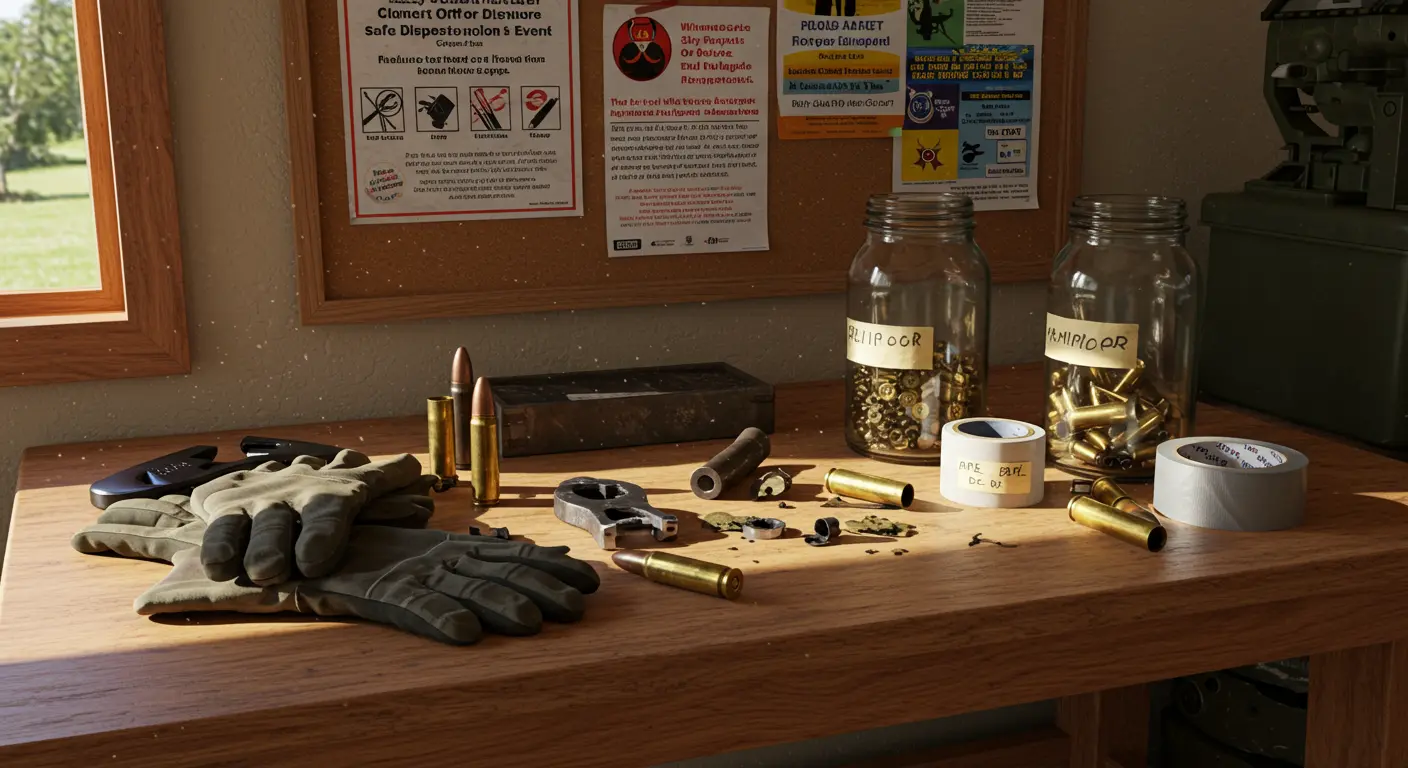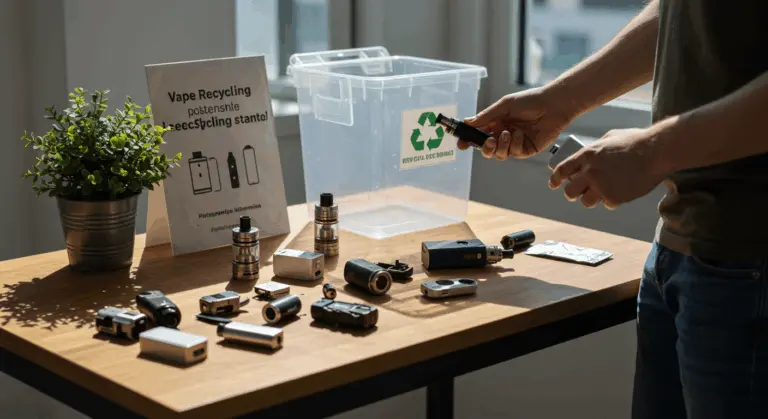Understanding the Risks of Improper Ammunition Disposal
Disposing of old ammunition isn’t as straightforward as tossing it in the trash. Improper disposal creates a serious combination of safety, environmental, and legal risks that all gun owners should understand.
Ammunition primers remain volatile, capable of igniting from impact, heat, or pressure—even in decades-old rounds. Such detonations can injure sanitation workers or trigger devastating fires in waste facilities.
Ammunition contains lead and other toxic heavy metals that contaminate the environment. When carelessly discarded in landfills, these toxins seep into soil and groundwater, poisoning ecosystems and drinking water supplies—which is why such disposal is prohibited across numerous jurisdictions.
Legal penalties for improper disposal vary dramatically by location but can include hefty fines. Various local, state, and federal laws applies, so you need to understand the specific regulations governing your area.
Understanding these risks shows why proper ammunition disposal methods are more than suggestions—they’re necessary. Investing time in correct disposal safeguards both you and your community from preventable dangers.
Hazardous Waste Facilities and Collection Events
Many municipalities operate specialized hazardous waste facilities staffed with trained personnel equipped to safely manage dangerous materials like ammunition. Such materials cannot safely enter the regular waste stream.
Reach out to your local waste management department to locate a facility or discover upcoming collection events. These community events—typically scheduled monthly or quarterly—provide residents with opportunities to safely dispose of various hazardous materials.
Since policies vary significantly, always call ahead to confirm the facility accepts ammunition and inquire about quantity limits. For transport, stick with the original packaging or use a secure, clearly labeled container.
This method ensures your unwanted rounds receive responsible handling by qualified personnel—often at no cost or for a minimal fee—while protecting both waste workers and our environment.
Using Law Enforcement for Ammunition Disposal
Contacting your local law enforcement agency is one of the safest and most reliable disposal methods. Police and sheriff’s departments possess the equipment and expertise to handle ammunition, often maintaining specialized units dedicated to this purpose.
Start by calling your local department’s non-emergency line to inquire about their ammunition disposal program. Many agencies actually repurpose suitable ammunition for training purposes, so come prepared to describe both type and quantity.
This service typically comes free of charge. Always call ahead for specific instructions before bringing ammunition to the station, and transport it in its original packaging or another secure, properly labeled container.
This approach provides confidence—you can rest assured that seasoned professionals with proper training and equipment will handle your ammunition according to stringent safety regulations. By using law enforcement services, you’re simultaneously supporting your local police department’s training resources while ensuring potentially hazardous materials are responsibly removed from your home.
Recycling Old Ammunition: A Sustainable Option
Recycling offers a sustainable alternative to traditional disposal methods. It diverts harmful materials from landfills, minimizes pollution, conserves resources, and supports a circular economy by transforming waste components into valuable new products.
Ammunition’s recallability hinges primarily on its condition. Unused ammunition offers the most promising recycling potential, though this option remains largely inaccessible to the public. Researchers at the University of Massachusetts-Dartmouth’s Center for Innovation and Entrepreneurship (CIE), who’ve engineered a prototype device capable of safely disassembling cartridges into their constituent parts. This technology enables the separation of various metals for recycling while repurposing gunpowder as fertilizer—an example of turning potential waste into useful materials.
Specialized tools like kinetic bullet pullers enable safe disassembly of dud rounds, separating recyclable metal components like brass casings. However, before attempting this process, you must verify local laws—some jurisdictions impose strict regulations governing who can legally disassemble ammunition.
When contemplating recycling as a disposal option, professional guidance is still important. Gun shops, shooting ranges, and reloading enthusiasts often provide advice or services for recycling ammunition components both safely and legally. As recycling technology advances and becomes increasingly accessible, this eco-friendly disposal method could become the preferred method for managing unwanted ammunition—while reducing both safety risks and environmental impact.
Components of Ammunition and Their Disposal
Ammunition comprises four main components, each presenting unique disposal challenges:
Disassembly demands specialized tools and expertise—it should only be attempted by those well-versed in safety procedures. Most people should turn in intact ammunition to law enforcement or a certified hazardous waste facility.
What Not to Do When Disposing of Ammunition
Knowing what not to do is as important as following proper disposal methods. Avoid these dangerous practices:
-
Bury it: Never bury ammunition. Lead and other toxic metals will leach into soil, contaminating groundwater systems.
-
Throw it in the trash: This practice is illegal in most jurisdictions and extremely dangerous. Ammunition can detonate in garbage trucks or processing facilities, causing severe worker injuries.
-
Soak it in water or oil: This doesn’t work. Modern ammunition often features water-resistant properties and can remain fully functional after soaking and drying.
-
Dismantle or burn it: Without proper training and specialized tools, dismantling ammunition can trigger primer detonation. Burning creates explosion risks while releasing toxic fumes.
Legal Considerations for Ammunition Disposal
Ammunition disposal is heavily regulated throughout the United States, with requirements varying dramatically depending on your location. Following these laws is important—not only for safety but also to avoid potentially severe legal consequences.
Federal regulations classify ammunition as hazardous materials due to explosive components and toxic metals like lead. The Environmental Protection Agency (EPA) and Department of Transportation (DOT) maintain specific guidelines dictating how these materials must be handled during disposal. State and local regulations are often stricter—some jurisdictions have specific rules for ammunition disposal.
Before attempting ammunition disposal, contact your local law enforcement agency or municipal government to inquire about area-specific regulations. Many localities mandate that all ammunition be surrendered to police departments or designated hazardous waste facilities rather than disposed of by private individuals. Some communities host periodic ammunition collection events specifically designed to help residents legally dispose of unwanted rounds.
Penalties for improper disposal can be substantial—fines ranging from hundreds to thousands of dollars. Criminal charges may apply for environmental damage, and you could face civil liability if someone suffers injury.
Gun owners who reload their own ammunition face additional regulations governing the storage and disposal of components like primers and powder. These materials are classified as explosives, each with distinct legal requirements for proper handling and disposal.
Remember—crossing state lines with ammunition for disposal purposes may trigger additional legal requirements under interstate commerce laws. Always dispose of ammunition within your own state unless you’ve carefully researched the legal implications of transporting it elsewhere.




